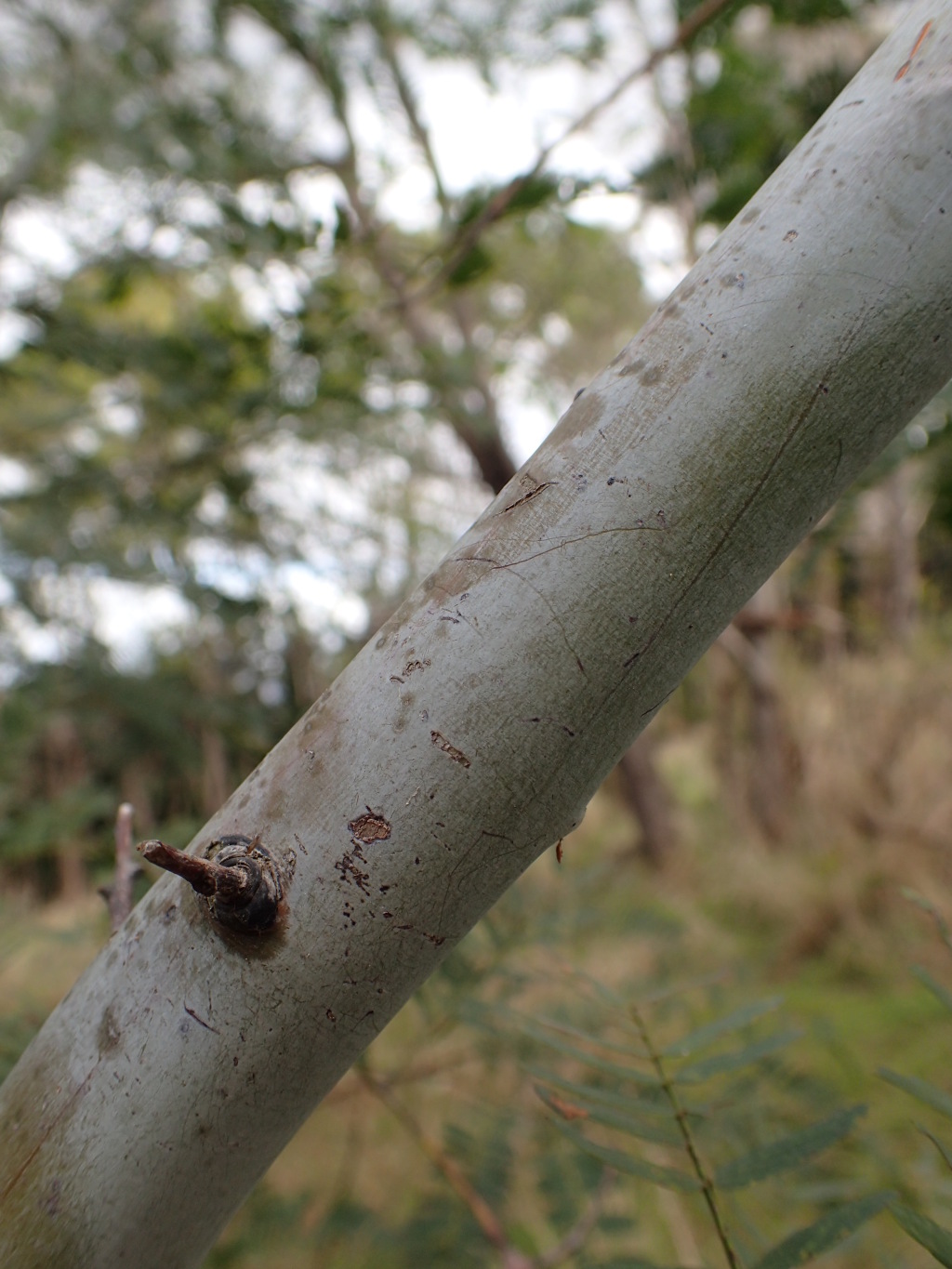Acacia schinoides
Benth.Shrub or tree 2–10 m high; bark smooth or finely fissured, grey, green or black and often mottled with green; branchlets ± terete, glabrous, pruinose. Leaves bipinnate, green, sometimes slightly glaucous; rachis 2–10.5 cm long, glabrous, with a gland one- to two-thirds below basal pinnae, sometimes with a second gland at the base of the uppermost pair of pinnae; pinnae in (2–)3–6(–7) pairs; pinnules in 10–28 pairs, well separated, lanceolate or narrowly lanceolate to narrowly oblong, slightly curved, 5–23 mm long, 1–5 mm wide, vein prominent, usually situated towards the adaxial margin, with 2–4 shorter veins not extending to the apex, margins with appressed hairs, apex subacute to rounded. Inflorescence in panicles or axillary racemes; heads globular, 27–50-flowered, pale yellow, peduncles 4–9 mm long. Pod more or less straight and flat, 3–15 cm long, 5.5–13 mm wide, irregularly constricted, often only slightly so, dark brown to bluish-black, often pruinose, glabrous or scabrous. Flowers mainly Nov.–Feb.
GipP, OtP, CVU, HSF, Strz. Native to New South Wales, occasionally escaping cultivation in Victoria.
 Spinning
Spinning



